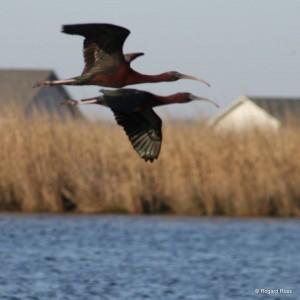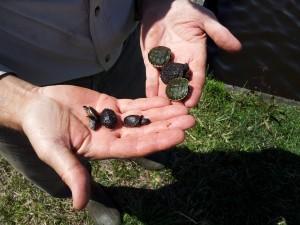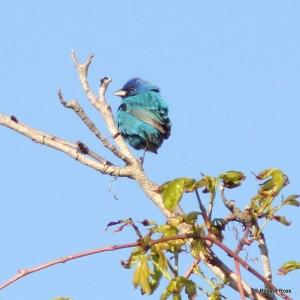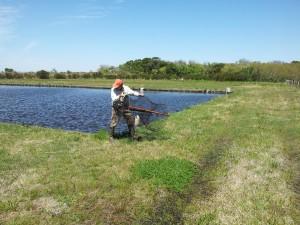What is biodiversity? Simply put, it is the sum of all living things that occupy a particular area. It is the masterpiece of Nature, even the hidden elements waiting to be discovered by curious investigators.
Such investigators arrived at the Donal C. O’Brien Sanctuary and Audubon Center on the Currituck Banks Friday, April 25. Scientists and naturalists from across the state were invited to the Center to participate in the Spring BioBlitz, a 24-hour ecological inventory of the site.
The Goal: To discover as much biodiversity on the site as possible in one day, to create a snap-shot of the masterpiece, one that can be compared with historical records, as well as future surveys.
Scientists participating in this exciting, ecological event included Alvin Braswell from the NC Museum of Natural Science, Dr. Alexander Krings from NC State University, professors and students from various colleges and universities, naturalist such as Ross Rogard from Virginia Beach and Mark Miller from Elizabeth City, as well as many others.
What did they find? Over 200 species of plants and animals were identified!
From the ubiquitous Canada Goose to the Water Scorpion; a pine tree whose identity is still up for debate; Herons, Egrets, Coots, Chuck Wills Widows and Whippoorwill on the wing; Leopard Frogs and Mud Turtles; Lone Star Ticks and Mourning Cloak Butterflies. Miniature flowers so tiny they were nearly impossible to photograph for Dr. Krings’ online Herbarium of Pine Island, and a huge stand of Giant Cordgrass. Species with wonderful names like: Suckling Clover, Squirrel Tree Frog, Sheepshead, Piedmont Staggerbush, and Jesuit’s Bark.
These discoveries will be compared with information from previous ecological inventories of the site. We already know that we have added many new species to our inventory, and many more will come when results of the entomology surveys are finalized. Eight new plants were added to the list, bringing the site total to 378 species of plants living on this 3,000-acre sanctuary.
The plants, along with the mammals, fungi, lichens, birds, fish, crustacean, reptiles and amphibians, even the water scorpions and slime molds make up the threads in the web of life. We live in a masterpiece of life. It pays sometimes to examine how the pieces make the whole, so when we step back to view the masterpiece once again, our awe is increased and hopefully too – our commitment to preserve it.
Update:
Totals have been tallied from the Spring BioBlitz. 231 individual species were found during the weekend Blitz. 43 new species were officially added to the list, bringing the total of individual species at the Sanctuary to 616.







